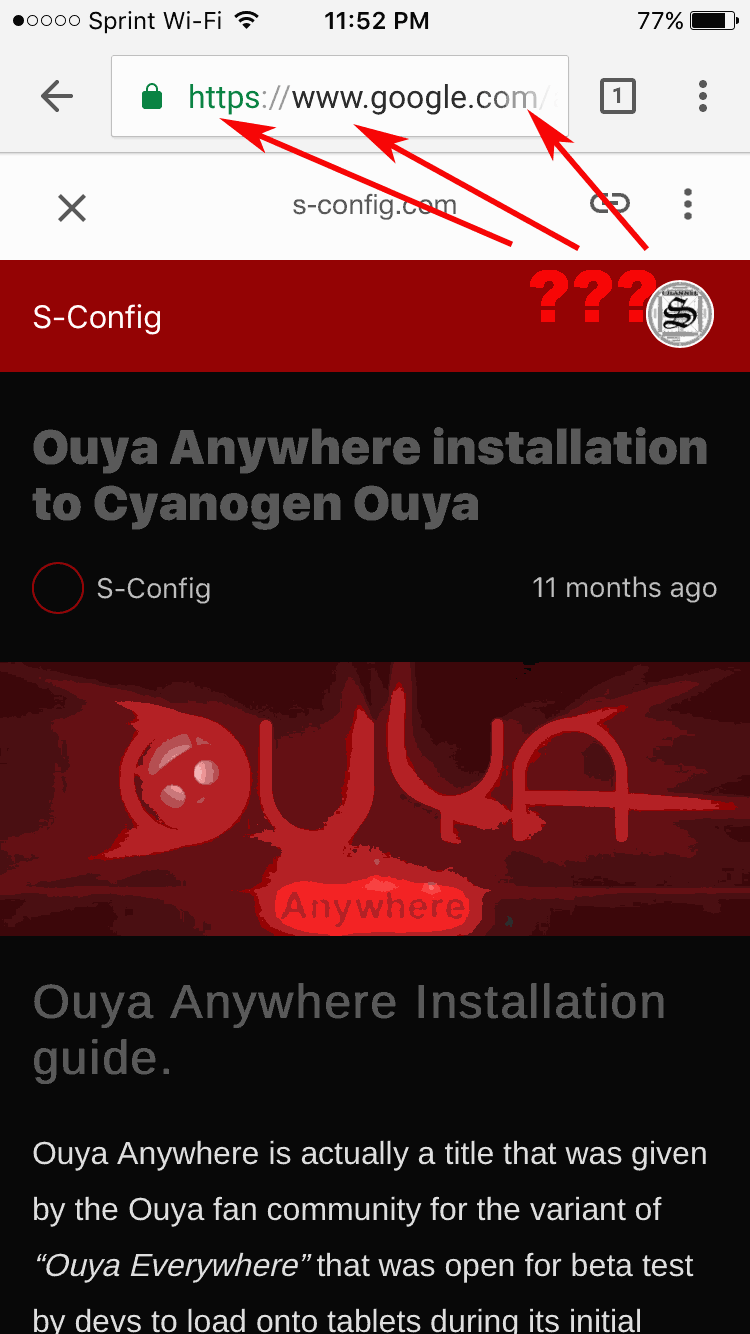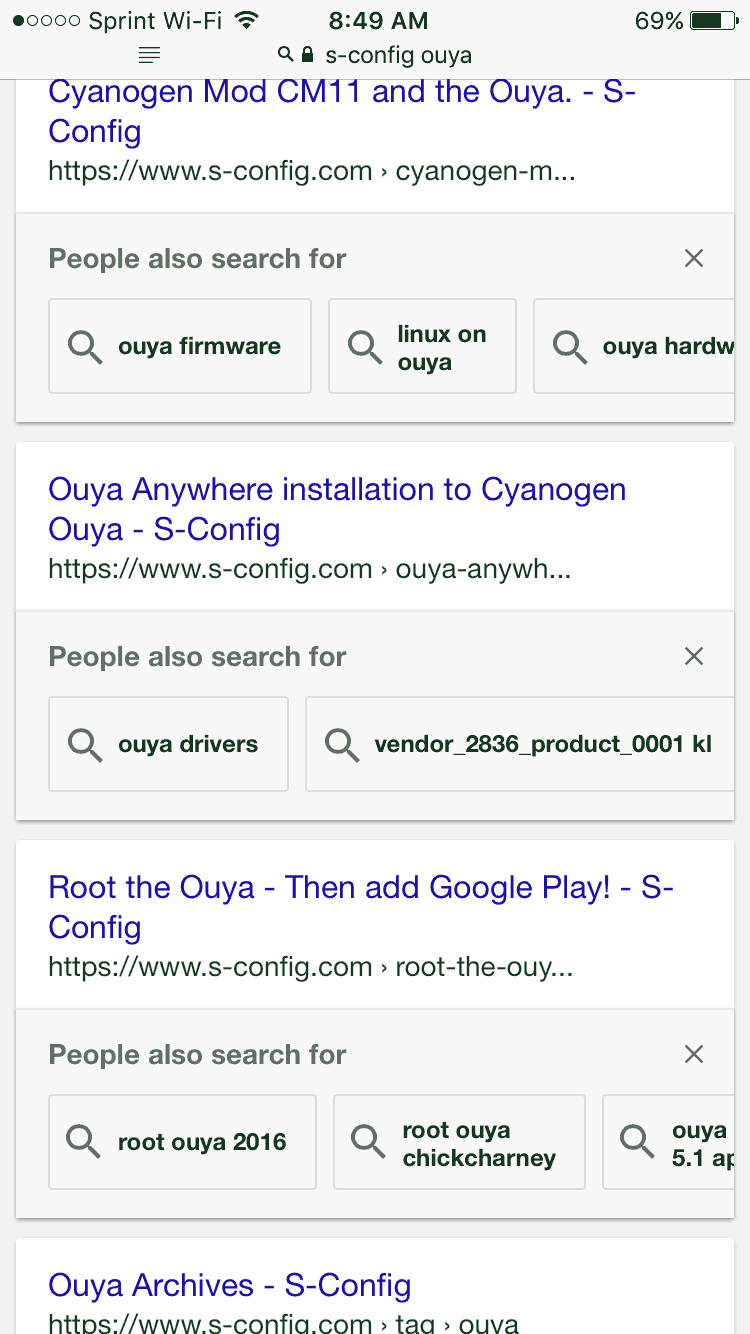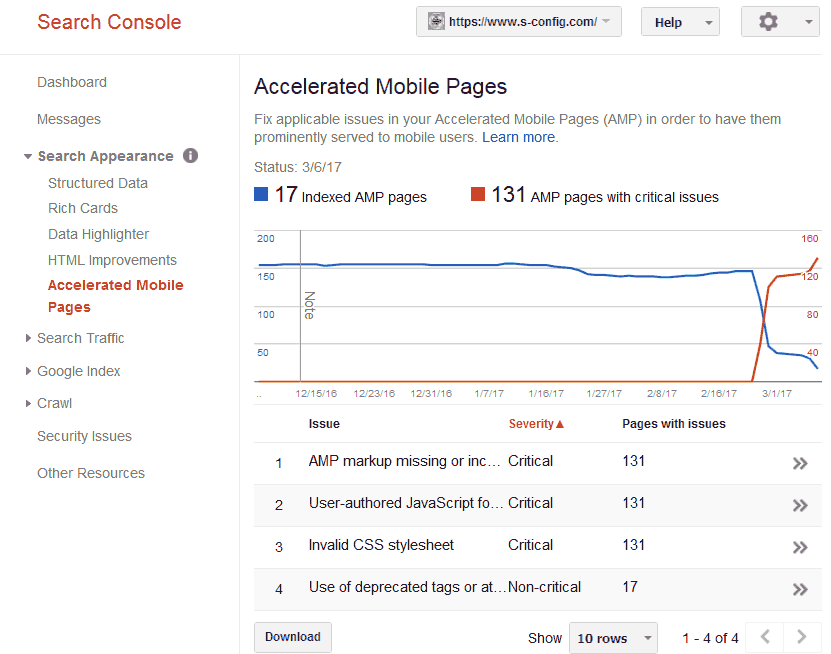The greatest enemy of AMP is the company that designed it. - S
The vast universe of WordPress bloggers are installing the AMP plugin as another means of making it easier for people to find their content online. But is AMP itself really serving its purpose? Or is it self-serving as a way of extracting content from individual bloggers? Perhaps there's something more nefarious behind this simple protocol. Read on if you want to know more.
First and foremost: What the hell is an AMP?
AMP is an abbreviation for "Accelerated Mobile Pages." This is an open-source project developed in partnership with Google. Its intention and goal is to create an alternative website that would otherwise be seen on desktops.
Destroying the aesthetics of a website will allow people to receive your content at a faster rate. The target audience for this is mobile users which even in this day and age people are still running around with potatoes for phones and thus need all the help they can get. Essentially, Google wants everyone to stop using multimedia and graphics that eat gigs of bandwidth. crawling back to the days of FrontPage 98, Geocities, and Angelfire servers when the web was simple and easy for search engines to index (except without the cool colors and animated gifs plastered everywhere, of course.)
Amp Plugin usage in WordPress.
For the most part, we used to agree with this protocol! Having an alternative to the glitz and glamor of what a website naturally throws out would be nice. Let mobile users get the basics and if they want to truly visit the site we're just a click away! Even though it seems counterproductive as we have this feature on our site called "responsive design". But Sure! Why not! This is why we initially installed the AMP plugin onto our WordPress engine. But as we poured through the code of AMP we began to notice some rather disturbing things about it:
'amp_runtime_script' => 'https://cdn.ampproject.org/v0.js',
'amp_component_scripts' => array(),
'customizer_settings' => array(),
'font_urls' => array(
'merriweather' => 'https://fonts.googleapis.com/css?family=Merriweather:400,400italic,700,700italic',
)'
If you dive into the amp\includes\class-amp-post-template.php of the WordPress plugin. You'll see this little piece of code which eventually will get plastered onto every single one of your /amp/ pages. It's making a call-out to https://cdn.ampproject.org/v0.js and also asking for CSS from the google fonts server to load the Merriweather font. If you're like us who actually cares about the privacy of the people who read their content you may be asking this question:
If the AMP protocol is to provide minimalist content for a faster web then why the hell is there JavaScript and fonts being loaded off of third party servers? - S
Our rules, not yours!
The answer to this question. In the eyes of the AMP. Google deems YOUR Javascript and CSS code unnecessary! You see, Google has a double standard when it comes to how it speaks to its end users. Google/AMP wants you to conform to a standard that if the roles were reversed google themselves could not possibly attain. This is partially due to how Google feels about the overall JavaScript community that it's wild and out of control. That if Google asserted itself as the dictator of absolute control then the web would be a better place. Google gets away with it because they're the #1 search engine. Where are you going to go? Go to Bing?!? HAH!
Your content is not really your content anymore!
 The number one reason why WordPress users enable AMP on their websites is a simple fact that they will be ranked better. If to follow the lock-step thinking with Google then as long as you're using all of googles technologies then google will place your results at the forefront above all others. Sometimes even scammers can get their websites above relevant links because they follow the rules of Google. So far everything looks just fine and how the search engine should operate. By showing you links for the pages you look for google returns the results of those pages. Wait for it!
The number one reason why WordPress users enable AMP on their websites is a simple fact that they will be ranked better. If to follow the lock-step thinking with Google then as long as you're using all of googles technologies then google will place your results at the forefront above all others. Sometimes even scammers can get their websites above relevant links because they follow the rules of Google. So far everything looks just fine and how the search engine should operate. By showing you links for the pages you look for google returns the results of those pages. Wait for it!
My site is going to google?!?
 The problems begin when you actually click on the AMP accelerated page. Do you see that address up top? That's Google CDN (Content Distributed Network) that you're going to. You're not going to the destination page your website generates. Instead, you are being redirected to a page that Google caches upon their own servers the moment you enable the AMP protocol on your WordPress site.
The problems begin when you actually click on the AMP accelerated page. Do you see that address up top? That's Google CDN (Content Distributed Network) that you're going to. You're not going to the destination page your website generates. Instead, you are being redirected to a page that Google caches upon their own servers the moment you enable the AMP protocol on your WordPress site.
What's a CDN?
"Content distributed networks" is a feature that most server operators such as ourselves generally pay for (We don't as we don't make money. too expensive! Also generates security issues.)
Imagine that you are in Australia and you wanted to visit this site which the data center is based out of Chicago, USA. Instead of going through 40-60 hops through various continental firewalls and routers which can take up to a minute to load.
Instead, you get routed to the nearest server in Australia that mirrors the data on my site. You get the content and information in seconds instead of minutes and it's a lot harder for hackers to shut you down since your content is worldwide. That's the true power of a CDN!
Back to Google's CDN.
Unlike a traditional commercial CDN that mirrors the content of your site down to the web address and all. The Google CDN does none of this! The end result is your professional website does not even look like it is coming from you anymore but from Google!
Also, when Google enables AMP for mobile phones that depend on the phone people are using it's very difficult to disable the AMP feature and go to the legitimate site where the content is being hosted on.
Why?
In a word? "Control".  I know some JavaScript developers blame themselves for creating such a monster. After all when the average website contains about 20+ pieces of JavaScript block code totaling approximately 420kb compressed. The language ends up becoming the target of why a website loads slowly. To be honest JavaScript people are way too hard on themselves!
I know some JavaScript developers blame themselves for creating such a monster. After all when the average website contains about 20+ pieces of JavaScript block code totaling approximately 420kb compressed. The language ends up becoming the target of why a website loads slowly. To be honest JavaScript people are way too hard on themselves!
Yes, it's generated some security issues. But JavaScript has also allowed a website to exceed the expectations of the end-user when they visit. From responsive designs to a gallery and sound it's everywhere and without it, our website would look rather boring!
Getting back to control; There's a war over information and who owns said information. News agencies and Google want to control the flow of information. Centralize it even! Because if you can control the way people acquire the information you could also control the way people think.
By having a CDN that 'mirrors' the combined user-created data of everyone around the world. Even though you don't really own the data it is still underneath Google CDN and umbrella. In effect, Google becomes the number one collective for news and media without really doing any of the work themselves making it profitable for ad campaigns investing. A practice where if any individual did this they would be called out on Twitter for content theft. But since this is Google the screams fall upon deaf ears.
AMP Content misdirection.
 In the same manner that YouTube propagates suggestions for viewers that are looking for something. The Google search engine adopts this same mentality for AMP as well. Google assumes that the majority of the web has no real idea of what they are looking for!
In the same manner that YouTube propagates suggestions for viewers that are looking for something. The Google search engine adopts this same mentality for AMP as well. Google assumes that the majority of the web has no real idea of what they are looking for!
Agree or disagree with this thought process. But Google therefore must provide a suggestion as to where they need to go. If you have a lot of articles about a particular subject and they are ranked rather high. This feature will be great for you because that simply means more traffic to your site. But if you don't then google is redirecting traffic away from your site to more popular sites which can spam away content instead of editing the content for themselves.
Bye Felicia!
Holy shit! I'm uninstalling Google AMP right now!
Not so fast! Google AMP is a lot like heroin for your website. It may boost your numbers but it also robs you of your existence.
By straight-up uninstalling AMP and going cold turkey, your site will go into a state of recoil. Resulting in a metric ton of 404 errors for your mobile users not being able to find your data which the Google search engine won't be able to correct for weeks. To make matters worse there's really no easy way to submit your website for re-evaluation without the AMP pages. If your website has a ton of 404 page not found errors then Google will start to downrank your site more and more.
How to stop your site from showing up on Google AMP fast.
Google assumes that once you installed one of its technologies and/or products you'll never-ever walk away from it. Since uninstalling is not the answer then the next step is to change the code. Make it impossible for their CDN to possibly accept/cache your site.
'amp_runtime_script' => 'https://www.mywebsite.com/v0.js',
'amp_component_scripts' => array(),
'customizer_settings' => array(),
'font_urls' => array(
'merriweather' => '',
)'
Removing Google fonts will not damage your AMP certification and in many respects will speed up your AMP-enabled site as it means one less server it has to perform a DNS lookup and download from. However, we can't get rid of the JavaScript from the CDN completely. doing so will result in a blank page.
This is sidestepped by grabbing the v0.js file off of cdn.ampproject.org and placing it onto your site your amp pages will work like normal. The Google CDN will no longer receive any of your data. By patching the file locally AMP pages will still work for users looking at your site. But Google will totally hate you for hosting your own JavaScript files. 
Poison the well and watch the AMP leech run!
Taking away Google CDN powers from your AMP-served pages will not make friends with Google! But part of uninstalling AMP is too severe due to links still going to your mobile readers. Poisoning the AMP page with "User-authored JavaScript" is enough to make the Google index system run away from your site in about 24 hours and self-correct the links faster then any form submission tool they could possibly offer.
301 re-direct the AMP leech.
Another method is to simply take advantage of the traffic through AMP via re-direct. Which is probably simpler!
Regardless of how many years have gone by crawlers and search engines will desperately keep looking for /amp/ pages within your blog. Google and it's CDN's are relentless because they're hoping that you see all of these errors appear in your Apache logs and AWStats and hope that you re-enable AMP and continue to feed them your valuable data. Since they are the ones knocking on your doorstep you minus will take advantage of their arrogance. In your .htaccess file which Apache looks at in the root of your WordPress installation directory add the following line:
RedirectMatch 301 ^/(.+)/amp(/.*)?$ /$1$2
This will redirect any actual /amp/ request to your legit blog article. Super handy to have in your .htaccess file in case you do what we do and turn off AMP to keep your content yours.
Oh for those on Nginx, the command is a little different.
rewrite ^(.*/)amp/$ $1 permanent;
Now we can redirect your readers to the actual blog articles instead of google directing people to 404 pages.
Final thoughts.
AMP is an interesting argument about the net and how much of a cluster-fuck the net has become. It's not the Javascript community as to why AMP failed. We can't even say that the AMP project killed itself from its own gravity. It all comes down to Google killing an idea. For they can't even get out of the way of themselves.
Why create a protocol forbidding JavaScript just to run your own for data collection? Between the Hypocrisy, and the need for more power via centralization. Google is quickly turning into one of our more hated companies.
As of 9/10/17, we have completely uninstalled the AMP plugin from WordPress. We get occasional hits for amp pages but nowhere near as devastating as if we cut ourselves off cold destroying our ranking in the process.
When it comes to the speed of your site we recommend sites like pingdom to really get an accurate score as it compares your sites to others around the world instead of some moving fictitious line in the sand. Also, note that having some JavaScript is okay! It's not the enemy.
Even if you become a crazy Tor user such as ourselves that's why we make backup plans with the <noscript> HTML command. It's okay!
This is all server has to say for now.
END OF LINE+++



Im sick to death of Google dictating to web site owners how "they" think a website should look
FUCK THEM!!
Ive only just got round to finally updating my website to a responsive one which again was due to the crappy google ranking.
They can shove this useless bullshit up their google box - if people can afford to view your website via a mobile phone they should not have one!
Use a computer and stop being lazy lol
I will be making the switch to away from google 4 sure!
I appreciate the energy! In a sense if AMP stood by itself as a standard for all to adopt I probably wouldn't have a problem with offering a version of the site which is completely devoid of javascript that sometimes accounts for the majority of a sites payload. In a sense it's still accomplished without google AMP by simply keeping your no-script plugin rocking at full bore though not many people think of that kind of redundancy. But google itself can't even abide by the standards that are placed upon us. So screw AMP in that regard.
I wish you luck on your switch away from google. If you are building a website stay away from AMP and analytic plugins, always check the source code your site is emitting as some devs get lazy and include google fonts into their themes. Get a private server which can host your site and email and even your ownclowd which is a variant of dropbox.
Yeah, I know it's "bad for SEO" but AMP seemed really shady from the moment it was announced and I've been avoiding using it like it's the plague. It also reeks of one of the main things that drove me from using Google in general. "We know best, do it our way [or else]". Google isn't nearly as perfect and all knowing as they like to think they are and I hate that so many web devs just cave and give them what they want.